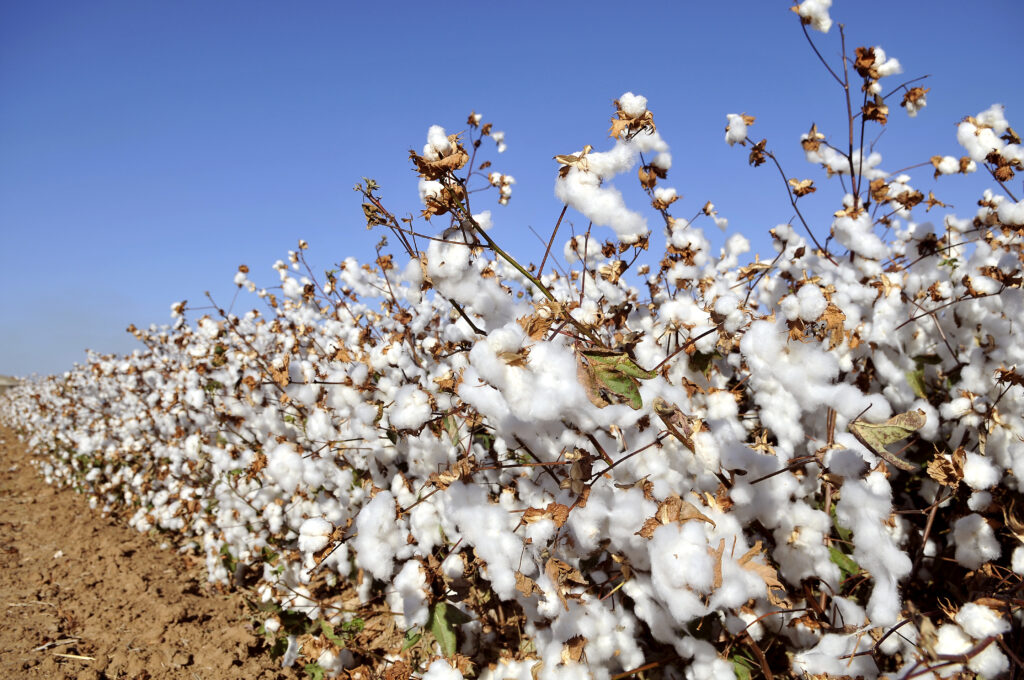Cotton is constantly surprising people with its applications and abilities. We’ve taken the time to write up a few interesting facts about cotton that you probably did not know.
1. Cotton has been around a very long time.
Seeds dating back to 450 BC were found in Peru.
2. Cotton Gin is not an alcoholic drink.
Gin is short for engine. It is a machine that removed cotton fibers from the cotton seeds.
3. All of the cotton plant is used, there is no waste.
The fiber is the primary reason for growing cotton. But the seeds are used for animal feed and human use (cottonseed oil). The plant stalks are tilled back in the soil after harvesting.
4. Cotton is a sustainable fiber.
The seeds are planted in the spring and harvested in the fall. It takes about five to six months for the plant to mature and the bolls to open for harvesting.
5. The cotton fiber is made up cellulose which is a natural polymer.
Humans can’t digest cellulose but ruminates such as cattle and horses can digest it because they have an enzyme that can break done to sugars.
6. Egyptian, Pima and Sea Island cotton are the longest cotton fiber grown.
Their average fiber length can reach up to1.7 inches. They make up only a small of the total cotton grown. It is grown from special seed that grows only very temperate areas, this limits where it can be grown. The length is the reason it is desired because you can spin finer (softer) yarns with longer fibers.
7. Most of the cotton grown is a variety called upland cotton.
This average fiber length produced by upland cotton plants can be as long as 1.3 inches. It is still very good for producing yarns, just not quite as fine as the longer Egyptian or Sea Island cotton.
8. To produce finer yarns out of any type of cotton, the short fibers are combed out before spinning into yarn.
It is called comber yarn, and yes the short fibers (comber noils or comber) removed are recycled and used for many products like cotton balls and Q-tips.
9. Yarns are classified by number.
The higher the yarn number the finer (thinner and softer) the yarn. So a 16 yarn is twice the weight of a 32 yarn.
10. You may have seen yarn counts at retail, especially on bed sheets, such as 600 count. That number represents the number of yarns per inch of fabric.
Naturally the fiber the yarns the more yarns you’ll have per inch of fabric. As said earlier the finer the yarn the softer it feels, therefore as fabric with 800 count will feel softer than a fabric with 500 count.
11. Cotton is grown in many countries around the world.
In the U.S. cotton is grown in 17 southern tier states, from Virginia to California.
12. Over the past thirty years modern farming techniques in the U.S. has reduced its environmental footprint.
See below (figures from Cotton Incorporated):
- Land – Soil conservation has increased by reducing soil loss 68%.
- Water used to grow cotton accounts for only about 3% of the world’s agriculture water use. In the U.S. 64% of the cotton is grown by naturally falling rainfall and irrigation water use has declined by 75%.
- Cotton has a neutral greenhouse gas footprint. In fact the amount of CO2 removed by cotton plants worldwide from the air is equivalent of taking 7 million cars off the road.
- In the U.S., there has been a 50% reduction in the number of pesticide applications over the last 25 years. Pesticides are used by farmers to stabilize yields and produce abundant and affordable supply of food and fiber.
- Cotton is 100% biodegradable and is compostable. Under aerobic or anaerobic conditions wipes made of cotton will biodegrade completely in 4 weeks.
13. Cotton is not absorbent or pure white it is a tannish color.
Mother nature coats it with a protective rain coat of oils and waxes so it can’t get wet and rot in the fields. To make it absorbent the oils and waxes have to be removed. To make it white the fiber has to be purified. In the past chlorine based chemicals were used for purification. At Barnhardt we use a total chlorine free purification process remove the oils and waxes and remove the color to produce absorbent, soft and pure white cotton.
14. Cotton is stronger when it is wet.
Unlike other cellulosic fibers (rayon, wood pulp) which lose strength when wet. This can be important for many products such as wipes and medical fabrics that will get wet.
15. Disposable diapers both adult and infant are white and absorbent so most people believe that they contain cotton.
Almost none of the commercially available diapers (including Pampers and Huggies) contain any cotton at all. The fabric that touches the skin in these products is made with petroleum based synthetic (plastic) fibers that are not biodegradable.
16. Disposable wipes are the same as diapers.
They are white and absorbent so most consumers think they are made from cotton but again most have no cotton in them.
More Facts About Cotton
If you’re looking for more information, check out our Know Your Fibers blog series or our definitive Cotton Fiber Properties page.
